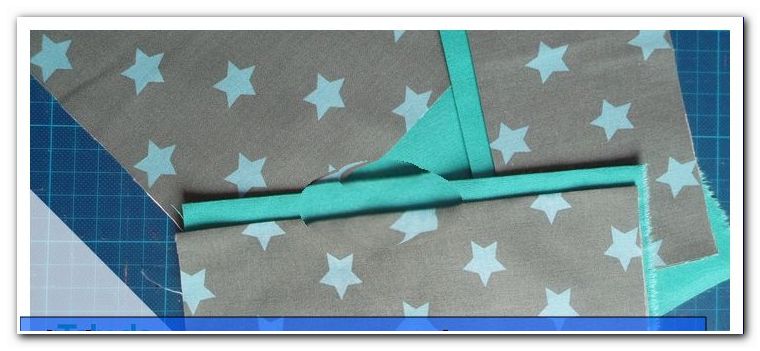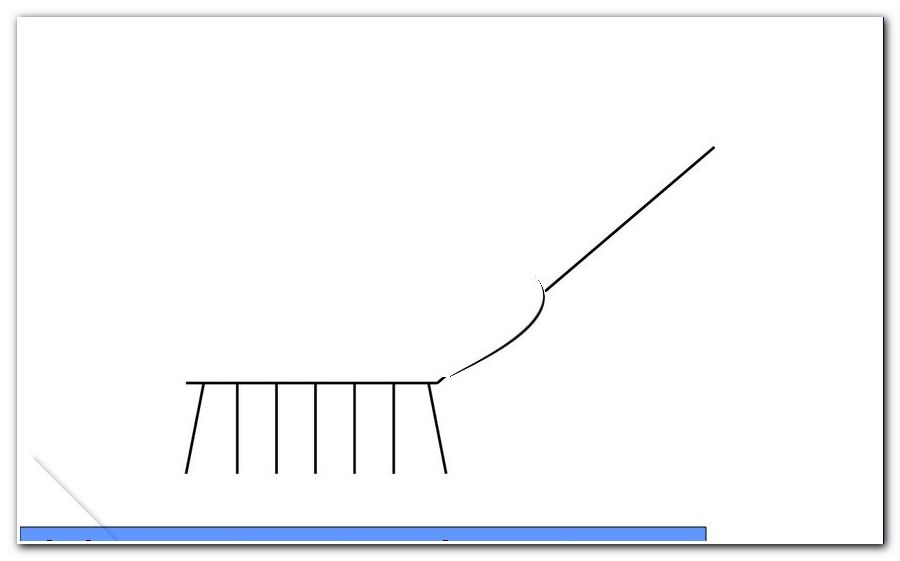Knit Check Pattern - Free DIY Check Knit Instructions

Checkered patterns are classic and fit for many occasions. Do you already know how to knit diamonds ">
Are you looking for new sample ideas for future knitting projects? How about diamonds? These are easy to knit and there are many different variations. We'll show you four of them in this guide. In addition to two single-color patterns, we also present two and three-color patterns. You only knit the monochrome check patterns from right and left stitches. We will explain the simple techniques for the multi-colored checks to you.
content
- Material and preparation
- Basics
- Framed checks
- Offset check pattern
- Tricolor checked pattern
- Check pattern | variants
- Checkerboard squares
- Two-tone checked pattern
- Knit more plaid patterns
Material and preparation
To knit diamonds, ideally use smooth yarn with no effects. As a result, the checks come into their own. You can also clearly see the individual stitches. The best way to practice is to use a medium-thick thread that you knit with a needle size of four or five. The banderole of your wool gives you clues as to which needle size fits.
You need to knit a plaid pattern:
- smooth, medium-strong yarn in one to three colors (depending on the pattern)
- matching knitting needles

Basics
Knitting pattern
Repeat the steps described in each row until your stitches are used up. Asterisks (*) in the row mean that you should only knit the part between the symbols several times. Work the stitches before the first and after the second asterisk only once at the beginning or end of the row.
Tip: Keep a tally list so that you know which row you knitted last even after a break.
All of the images in this guide show the front of the pattern. You can see this in front of you if you are working from the right side, that is, an odd numbered row. Only with the three-color check pattern do you knit a back row first. This means that you will see the front side in straight rows.
Always knit a row of purl stitches after you have cast on the stitch before starting the pattern. This will make the knots, which resemble left stitches, disappear from the back of your work. With the three-color plaid pattern, omit this step because the pattern already starts with a row on the left.
Kettrand
You need edge stitches for even side edges. Cast on two stitches more than you need for the pattern. There are several ways to knit the edge stitches. The simple chain edge gives a nice braid-like finish. To do this, lift the first stitch in each row onto the right needle without knitting it. Put the thread before work. Work the last stitch before the end of the row on the right.

Multi-colored patterns with lifting stitches (for the three- and two-colored checks)
With lifting machine technology you knit in each row with only one color.
Tip: Do not cut the thread when changing colors. Let it hang on the side until you need it again.
The multi-colored effect is created by raised stitches that still have the color of the previous row. To raise a stitch, slide it onto the right needle without knitting it. If the instructions indicate a stitch that is lifted to the right, put the thread behind the work. If you want to raise the stitch on the left, however, the thread comes before work.
Tip: Do not pull the thread too tight on the stitch that follows a raised stitch so that the knitted fabric remains elastic.
Envelope (for two-tone checks)
Place the thread once over the right needle from front to back. This creates a new stitch. For the two-tone checks, drop the envelopes in the next row so that the neighboring lifting stitch can expand over six rows.
Framed checks
You need a number of stitches that can be divided by ten and three additional stitches. Cast on 2 x 10 + 3 = 23 stitches plus two edge stitches for a practice flap.
1st row: 1 stitch left, * 1 stitch right, 1 stitch left *

2nd row: same as 1st row

3rd row: 1 stitch left, 1 stitch right, 1 stitch left, * 7 stitches right, 1 stitch left, 1 stitch right, 1 stitch left *

4th row: 1 stitch left, 1 stitch right, 9 stitches left, * 1 stitch right, 9 stitches left *, 1 stitch right, 1 stitch left

5th row: same as 3rd row
6th row: same as 4th row
7th row: same as 3rd row
8th row: same as 4th row
9th row: same as 3rd row
10th row: same as 4th row

Repeat the ten rows continuously.
Tip: Finish your piece of knitting after the second row of the pattern so that the upper edge ends exactly as the lower began.

Offset check pattern
Cast on a stitch number that is divisible by eight. In addition, you need four stitches extra.
1st row: knit all stitches

2nd row: 1 stitch left, 2 stitches right, 1 stitch left, * 4 stitches right, 1 stitch left, 2 stitches right, 1 stitch left *
3rd row: * 1 stitch on the right, 2 stitches on the left, 1 stitch on the right, 4 stitches on the left *, 1 stitch on the right, 2 stitches on the left, 1 stitch on the right

4th row: purl all stitches

5th row: same as 3rd row
6th row: same as 2nd row
7th row: same as 3rd row
8th row: same as 2nd row
9th row: same as 3rd row
10th row: same as 2nd row

Knit the rows described until your piece is finished.

Tip: Knit until the fourth row so that the beginning and end of the pattern look the same.
Tricolor checked pattern
For this pattern, your number of stitches must be divisible by four. Cast on the stitches in color A. This is the color that half of the diamonds should have. It is orange in our pictures. The other two colors are called B and C (in our case light green and lilac).
1st row (color A): knit all stitches on the left

2nd row (color B): 3 stitches on the right, 2 stitches on the right, * 2 stitches on the right, 2 stitches on the right *, 3 stitches on the right

3rd row (color B): 3 stitches on the left, 2 stitches on the left, * 2 stitches on the left, 2 stitches on the left *, 3 stitches on the left

4th row (color A): knit all stitches

5th row (color C): 1 stitch on left, 2 stitches on left, * 2 stitches on left, 2 stitches on left *, 1 stitch on left

6th row (color C): 1 stitch on the right, 2 stitches on the right, * 2 stitches on the right, 2 stitches on the right *, 1 stitch on the right

Repeat the six series of patterns again and again.

Check pattern | variants
Checkerboard squares
Knit the pattern in two colors to create a checkerboard look . To do this, work the rows for color B and C with the same color.
Two-tone checked pattern
For this pattern you need a number of stitches that can be divided by eight. Cast on an additional six stitches. Use color A for the stitch cast . This is the color in which the grid is to be made (orange in our pictures). Color B is for the background (white here).
1st row (color A): knit all stitches
2nd row (color A): same as 1st row

3rd row (color B): 1 stitch on the right, 1 stitch on the right, 2 stitches on the right, 1 stitch on the right, * 4 stitches on the right, 1 stitch on the right, 2 stitches on the right, 1 stitch on the right *, 1 stitch on the right

4th row (color B): 1 stitch left, 1 stitch left, 2 stitches left, 1 stitch left, * 4 stitches left, 1 stitch left, 2 stitches left, 1 stitch left *, 1 stitch left

5th row (color A): knit all stitches

6th row (color A): 2 stitches on the right, 1 yarn over, 3 stitches on the right, 1 yarn over, * 5 stitches on the right, 1 yarn over, 3 stitches on the right, 1 yarn over *, 1 stitch on the right

7th row (color B, drop the covers from the previous row when knitting ): same as 3rd row

8th row (color B): same as 4th row
9th row (color B): same as 3rd row
10th row (color B): same as 4th row
11th row (color B): same as 3rd row
12th row (color B): same as 4th row

Repeat the 12 rows of the pattern continuously.

Tip: Stop after a fifth row so that the pattern at the top looks the same as the bottom.
Knit more plaid patterns
You can find more ideas on plaid knitting in our instructions. For checkerboard patterns under checkerboard pattern: one and two colors - free instructions and for diamond patterns under diamond pattern: one and two colors - free instructions.




